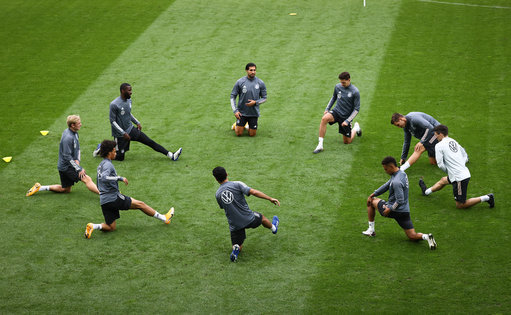
How Does Altering the Volume-Load of Plyometric Exercises Affect the Inflammatory Response, Oxidative Stress, and Muscle Damage in Male Soccer Players?
Jian Tian, Miao Miao
Incorporating plyometric exercises (PE) into soccer players’ conditioning routines is vital for boosting their performance. Nevertheless, the effects of PE sessions with diverse volume loads on inflammation, oxidative stress, and muscle damage are not yet clearly understood. This study aimed to examine the effects of altering the volume-loads of PE on indicators of oxidative muscle damage and inflammation. The study involved forty young male soccer players who were randomly assigned to three different volume-loads of PE (Low volume-load [100 jumps]: LVL, n = 10; Moderate volume-load [150 jumps]: MVL, n = 10; and High volume-load [200 jumps]: HVL, n = 10) and a control group (CON = 10). The levels of various biomarkers including delayed onset muscle soreness (DOMS), serum lactate dehydrogenase (LDH), creatine kinase (CK), 8-hydroxy-2-deoxyguanosine (8-OHdG), malondialdehyde (MDA), protein carbonyl (PC), leukocytes, neutrophils, interleukin-6 (IL-6), and C-reactive protein (CRP) were measured at different time points. These measurements were taken at rest, immediately after completion of PE, and 24-, 48-, and 72-hours post-PE. The CK, LDH, DOMS, 8-OHdG, MDA, and PC levels were significantly increased (p < 0.05) after the PE protocol, reaching their peak values between 24 to 48 hours post-PE for all the volume-loaded groups. The levels of leukocytes, neutrophils, and IL-6 also increased after the PE session but returned to resting values within 24 hours post-PE. On the other hand, CRP levels increased at 24 hours post-PE for all the treatment groups (p < 0.05). The changes observed in the indicators of muscle damage and inflammation in response to different volume-loads of PE was not significant. However, the HVL and MVL indicated significant differences compared to LVL in the 8-OHdG (at 48-hour) and MDA (at 72-hour). Athletes engaging in higher volume-loads demonstrated more pronounced responses in terms of biochemical variables (specifically, LVL < MVL < HVL); however, these changes were not statistically significant (except 8-OHdG and MDA).



